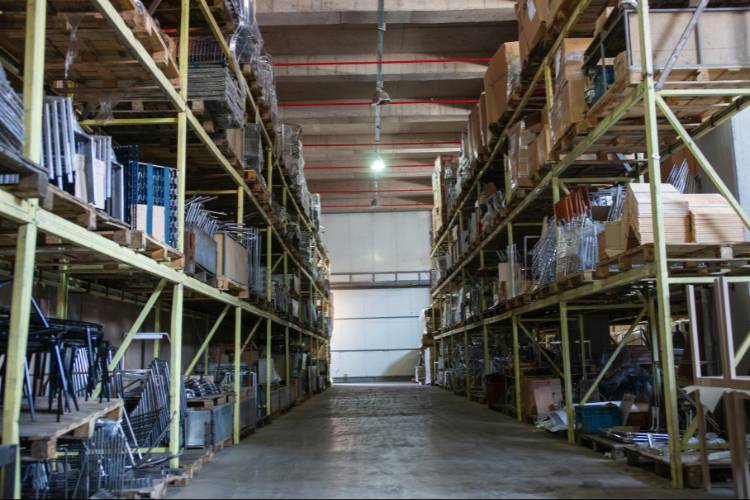The working capital demands of construction projects require that subcontractors have a strong capital strategy. Without the right financial support, subcontractors put their construction projects at risk of delay or failure.
Unfortunately, many subcontractors use ineffective or inadequate sources of working capital that wind up costing them stability and growth prospects. One of those sources is cash. While subcontractors often reach for cash as a cheap and easily-available funding source, using cash first limits a business’s flexibility and can stifle growth.
Included within that cash is one source of capital subs might not even realize they’re using— their retained profits. Subcontractors often deposit long-awaited retainage payments into the business bank account without realizing the profits are being absorbed back into the business.
The amount of recycled profit is not insignificant: Out of the businesses polled in the 2025 National Subcontractor Market Report, 40% say they leave the majority (51% to 100%) of their profits in their businesses as working capital.
While allowing profits to live in the business may seem harmless, there are a few reasons subs should create a plan for their profits. This article will discuss the reasons why you should stop cycling profits directly into your business’s working capital, and why a diverse selection of working capital options is the best way to improve cash flow, create long-term solvency of the business, and let profits serve the purpose you specify for them.
Table of Contents
Why You Shouldn’t Use Profits as Working Capital
Profit is not meant to be used as a buffer for business operations. Business owners have unique and personal goals for how that money should be used. By letting it be absorbed back into working capital, profits are no longer available for their intended use.
Here are some of the dangers to not separating profits from the rest of your business’s working capital.
Limits Growth
One common goal for profits is that they can be used to grow the business. Investments in new technology, equipment, or personnel can help launch the business into a new playing field or help with client acquisition. However, if profits are regularly used as part of the working capital, it limits the business’s ability to branch out.
Hides a Cash Flow Problem
Profits are included in pricing models to be something extra, above and beyond project costs, that can be put toward other purposes. When profits are instead included and regularly used as part of working capital, it can mask profitability issues within the business that may only get worse over time. Businesses may not realize they have a cash flow problem because their retained profits are sitting in their bank account, painting a misleading financial picture. By removing profits from working capital you can determine the true amount of working capital available to the business to cover its expenses.
Uses Up Owner Gains
There are a few reasons people start their own businesses, like doing work that is personally gratifying, not having to answer to a boss, and getting the chance to earn better money. In fact, 60% of subcontractors surveyed started their businesses with the goal of financial stability and wealth building. However, 70% of business owners report that they are not able to draw profit regularly from their company in addition to their salary. Subcontractors who let their profits go back into working capital are simply working for their salaries, the same as when they worked for another boss. They’re taking away their personal reward for the extra stress and workload of being a business owner.
Leaves Cash Open to Risk
Any funds that exist within a business are open to some risk. Damages and lawsuits that result from project activities can leave the business open to losses. If profits live in the same bank accounts as working capital funds, they become open to these risks.
For example, if a business makes an error that causes a project delay the business may get sued for damages. If the profits are tied up in business accounts along with the other working capital funds, they could now be subject to the lawsuit along with the rest of the business’ money.
Subcontractors hedge some of that risk by taking profits out of the business and placing them in personal accounts. In the event of a lawsuit, those funds may be protected. If those funds are needed after catastrophe strikes, they can always be put back into the business later to get things back on track.
A Better Alternative: Build a diverse set of working capital options
Instead of using profit the same way you use payments from projects, consider removing profits from working capital funds to use elsewhere. Doing so will help shed light on the financial well-being of your business and offer some risk protection. As part of a strong capital strategy, begin building a robust set of options that will help the business survive and thrive through regular project challenges.
Include options like:
- Credit cards – Credit cards are extremely useful but funds are inherently limited and should be supplemented with other working capital options.
- Bank lines of credit – A great revolving credit option that allows subcontractors to take out and pay back funds as required. Bank lines of credit should be paired with other solutions as some covenants can trigger sudden recalls and blanket liens, which could leave business in an unexpected cash shortfall.
- Supplier terms – Subs can use supplier terms on a consistent basis to help manage their materials needs. Supplier terms are best used as a part of a more diverse selection of working capital solutions as the terms may be limited and can negatively impact supplier relationships if not handled well. Often you will have to use outside working capital to pay off after terms run out but payments are still pending.
- Cash – Cash set aside from project payments is a critical part of any working capital strategy – having flexible funds ready to go to cover sudden expenses provides excellent protection. Profits should not be considered a sustainable working cash option. Further, cash alone will not cover most working capital needs, and it should be viewed as a part of a more robust capital strategy. Subs should look to use less flexible working capital sources first, saving cash for emergencies and opportunities.
- Construction-specific lending, like Billd – Understanding the construction industry means products like the ones Billd offers can help bridge cash flow gaps that are common to subcontracting businesses. Billd has a fast approval and payment process, and flexible terms that closer align to payment terms seen in the industry.
Profits Aren’t Just Another Form of Working Capital
Earning a profit on a construction project is integral to running a successful subcontracting business. Those profits serve an important purpose that is determined by the business owner, but one of those purposes shouldn’t include consistently being recycled through the business.
Make an active decision about how to use your business’s profits, and create a more effective capital strategy that uses construction-specific lending options to stabilize your cash flow. Check out Billd’s whitepaper, Building a Working Capital Toolkit, to learn more about how to create a strong capital strategy for your subcontracting business.






